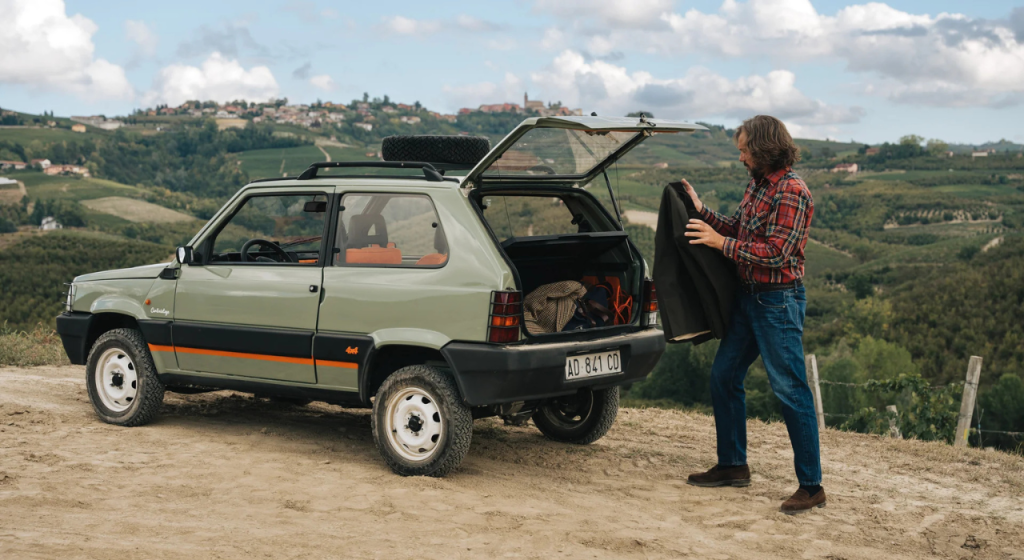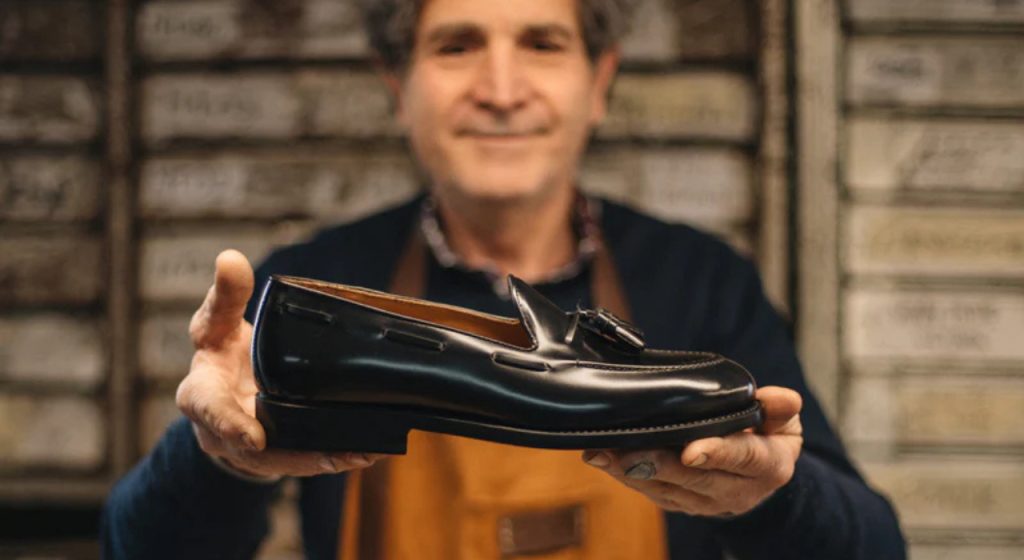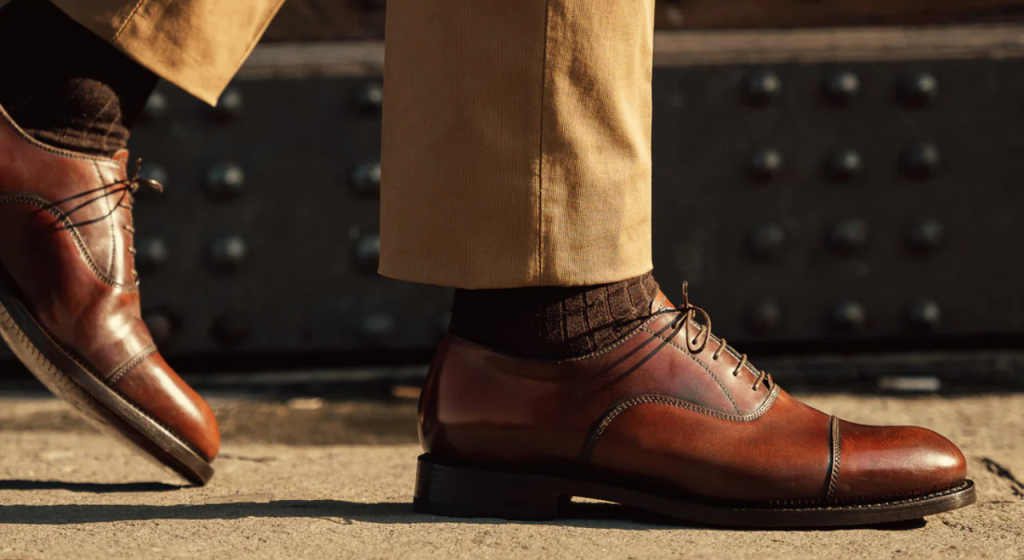In today’s world of “trending” products, you may think sticking to the classics is a recipe for failure. While this isn’t completely false, this couldn’t be farther from the truth—as proven by our featured brand today.
If you’re aiming to be a timeless brand, this brand story is for you.
- Small and direct steps to success 🦶
- Building a timeless reputation ✨
- Better product quality = Better sales in 2025 💵

SCRATCHING THE SURFACE
The success timeline (and tactics) of a footwear brand that disrupted the market

Great ideas can spring anywhere. For Velasca, it all started in the back of a taxi. Founders Enrico Casati and Jacopo Sebastio were talking shoes—specifically, the gap between overpriced designer pairs and cheap fast-fashion options.
The solution they came up with? Bring Italian handcrafted leather shoes directly to consumers.
Fast forward to today, Velasca has grown into a global direct-to-consumer (DTC) brand loved in over 30 countries.
👞 Timeline of making "Made in Italy" accessible
- 2012: The idea sparks. Enrico, a 25-year-old banker in Singapore, needed loafers for work but couldn’t find the right option between expensive designer shoes and cheap fast fashion. This frustration led to a conversation with Jacopo that gave birth to Velasca.
- 2013: Velasca is born. Velasca is officially founded in Milan. The founders built a DTC model, cutting out middlemen to offer affordable handcrafted Italian shoes.
- DYK: Enrico and Jacopo traveled to Marche, Italy where craftsmanship runs generations deep. They persuaded the artisans to accept smaller orders than those usually requested by large fashion houses.
- 2014: First pop-up. Velasca tried a temporary pop-up store in Milan to test the physical retail concept.
- 2015: First permanent retail store. Velasca opens its first permanent store in Milan. This marked the beginning of the brand's move from purely online to a combination of online and offline presence.
- 2016: Expanding retail footprint. Velasca opened its second store in Rome and continued to grow its physical retail presence.
- 2017: European expansion. After refining its retail strategy, Velasca opened 7 new stores across Europe. This includes locations in major cities like London and Paris.
👣 Starting small and growing smart
From the start, Velasca knew the importance of doing things differently. They continue to innovate and grow with new stores, expanded product lines, and a stronger online presence.
But most importantly, they keep a close connection with customers—ensuring trust, authenticity, and quality stay at the heart of the brand.

DIVING DEEPER
How a humble footwear brand built a timeless reputation

Trends come and go in the blink of an eye. But Velasca? They’re not interested.
From Day 1, the brand made a bold choice: keep short-lived trends out of the office. Instead of chasing fads, Velasca focuses on timeless, handcrafted shoes that never go out of style—but are built to last.
💸 Trends don't pay the bills
While jumping on trends can drive quick sales, Velasca played the long game.
- Craftsmanship over clickbait. In a world obsessed with “what’s next,” Velasca decided to double down on what works. Each pair of shoes is designed to be a staple, not a statement piece that gathers dust after one season. That commitment to quality gave Velasca a trustworthy reputation.
- Creating value beyond the season. By building a catalog of versatile, high-quality footwear, Velasca avoided the pressure to constantly release “the next big thing,” which often results in unnecessary markdowns and product cycles.
- Marketing that matches the mission. Velasca’s “no-trend” mindset extends beyond its shoes—it’s baked into its branding. Rather than hype-heavy campaigns, they focus on storytelling that reflects their core values: authenticity, craftsmanship, and quality.
🫵 You are the next big thing
We get it. It’s tempting to jump from one trend to another because it brings massive sales, but it’s often short-lived. Focusing on long-term value, however, helps build a loyal customer base and a brand that stands the test of time.
Velasca’s approach offers valuable lessons in building a lasting business. By avoiding the trap of short-lived trends, you can build a reputation for quality and timeless style—allowing you to stand strong in a competitive market.

SUCCESS BLUEPRINT
6 ways to improve product quality for better sales in 2025

When customers get their hands on something they love, they'll keep coming back for more. But if the quality's off, it can lead to complaints, returns, and lost trust.
✍️ That’s why keeping an eye on your product’s quality is so important. Quality Gurus listed ways to spot areas where your product quality can improve.
- Listen to customer feedback. Whether it’s surveys or reviews, customers will tell you exactly what they like and dislike about your product. Pay attention to that! 👂
- Additionally, look closely at your data—product returns, defects, and customer complaints. These numbers can reveal problems you might not notice otherwise.
- Find the root cause of issues. When you spot a product defect, go deeper and conduct a root cause analysis. This will help you understand and fix the problem so it doesn't happen again.
- Additional tip: Do testing and inspections to catch issues before the product reaches your customers. These checks act like safety nets, ensuring your products meet your standards. ✅
- Get employees involved. Your employees are the ones who work with your products every day, so they might see problems or solutions you missed.
- Work with your suppliers. The materials and parts you get from suppliers affect your product’s quality. Build good relationships with them to make sure they’re providing high-quality materials.
- Compare with competitors. Look at how your product stacks up against similar products from competitors. This can help you find areas where your product may be falling short and give you ideas for improvements.
- Spot potential problems early. Failure Mode and Effects Analysis (FMEA) can help you figure out where things might go wrong. By addressing issues early, you can prevent bigger problems later.
🦸 Make quality your superpower
Improving product quality is an ongoing process. It’s not just about fixing problems as they pop up—it’s about making continuous efforts to improve. So, keep these strategies in your back pocket and keep pushing for better quality. Your bottom line will thank you.








